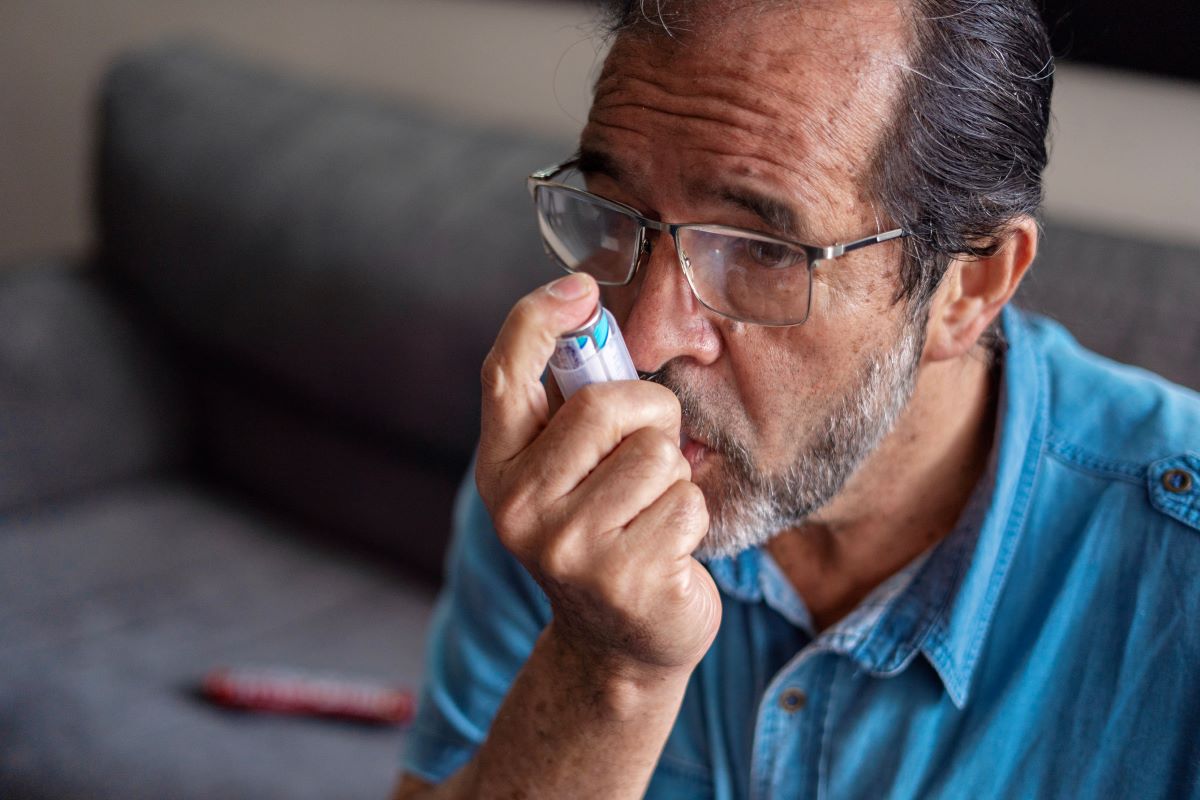
I want to take this opportunity to talk about asthma, especially as we enter spring, which is one of our busiest times for people having symptoms, be it allergies, bronchitis, asthma and so on.
What is asthma?
Asthma is not a single disease process. It’s a symptom of a series of complex, overlapping individual diseases. Anybody with wheezing or chest tightness due to various causes — genetic, environmental, or most commonly a mix of both — has asthma. I like to say it’s more of a symptom of a disease process rather than one unique pathology.
There are different types of asthma. The most common are allergic asthma, non-allergic asthma and aspirin (medication)-induced asthma. A classic example of medication-induced asthma is non-steroidal anti-inflammatory medications — things like aspirin, ibuprofen and the like.
Symptoms
When someone’s having an asthma flare, their bronchial tubes are thickened, have more mucus and the muscles are constricted. Imagine trying to breathe through a narrowed pipe. That extra resistance causes symptoms:
- Wheezing – that whistling sound that comes when air moves through narrow, tight spaces
- Shortness of breath
- Chest tightness
- Coughing – a lot of people also have a dry cough
- Exercise-induced symptoms – some people only experience symptoms when they exercise
- Excess mucus production
- Fatigue – when you’re trying hard to breathe, it’s exhausting
- Nasal congestion, runny nose or a stuffy head
Asthma often comes with other conditions
Asthma often goes along with other atopic conditions. People will have nasal congestion, runny nose, sinus headaches and even dry, itchy skin — commonly called eczema or atopic dermatitis. Atopy is the term for people predisposed to develop these allergic-type symptoms. There’s something called the “atopic triad”: asthma, eczema and allergic rhinitis. If someone has two of those and develops a cough or wheezing, you can be pretty sure they also have asthma.
Asthma isn’t just for kids
There’s a common belief that asthma is just a childhood disease, and that’s not really true. Actually, half of the people diagnosed with asthma are over the age of 50. So adult-onset asthma is quite common and quite important. There are over 20 million adults with asthma in the United States, and it’s slightly more common in women than in men. Again, there’s a mix of genetic predisposition, environmental exposures and lifestyle factors.
Who’s most at risk?
There are certain risk factors that make someone more likely to develop asthma. If you have a family history of asthma or allergies, that’s a big one. Repeated exposure to allergens or irritants — like tobacco smoke, pollution, or chemicals at work — can also increase your risk. Obesity, frequent respiratory infections during childhood and living in areas with poor air quality all play a role. And again, while we think of asthma as a childhood condition, it can develop at any age, even later in life.
Common triggers
Triggers include indoor allergens, outdoor allergens, infections, irritants, activity, cold air and even things like laughing or strong emotions. For indoor allergens, dust mites, pet dander, mold, or exposures at work can be big ones. The good news is that those are often things we can fix — like changing out pillows and mattresses, using dust-mite-proof covers, or sometimes even changing job duties.
Diagnosis and treatment
Asthma is a clinical diagnosis. We use pulmonary function testing, sometimes blood work to check allergy levels and occasionally imaging to rule out other causes. Management starts with trigger avoidance. Then we use inhalers — rescue inhalers for quick relief and controller medications, usually with a steroid, for daily use.
If that’s not enough, we look at other treatments like antihistamines, Montelukast, biologics like Dupixent or allergy immunotherapy — shots or under-the-tongue tablets. In rare cases, we can even use a procedure called bronchial thermoplasty, where we apply heat to reduce muscle tightness in the airways.
Asthma is a complex condition, but with the right diagnosis and management, most people can live full, active lives. Understanding your triggers and working with your health care provider are key to staying in control.
Learn more about Northside Hospital Pulmonary Services.

